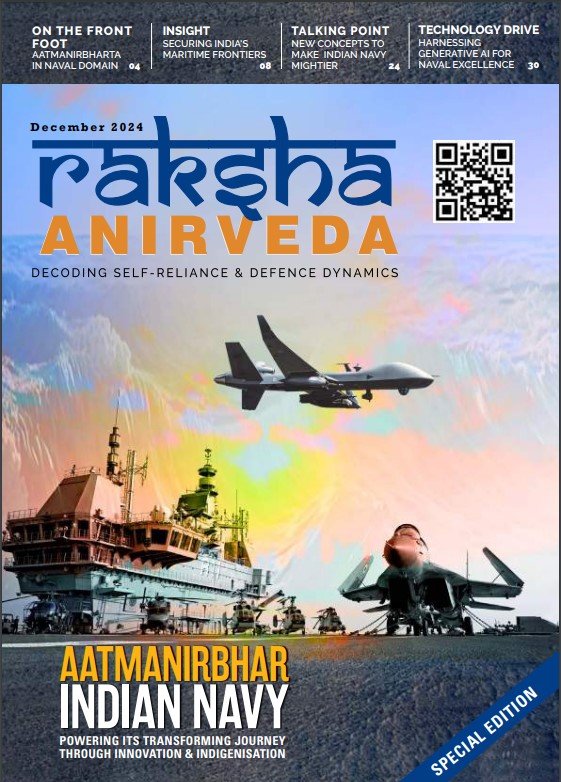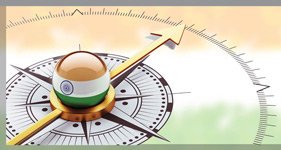New Zealand Prime Minister Christopher Luxon in his remarks at the 10th edition of Raisina Dialogue 2025 was in awe of India’s remarkable growth as it aims to be third largest economy in the world. New Zealand identified India as a priority country in its ‘Opening Doors to India’ policy notified in October 2011, which was reiterated in 2015. In 2011, New Zealand launched the NZ Inc. India Strategy, aiming to make India a core trade, economic and political partner for New Zealand.
India and New Zealand, though geographically distant, have recognised the strategic imperative of strengthening their bilateral relations. This partnership, rooted in shared democratic values, is gaining momentum, particularly in the critical areas of defence, economy, and technological cooperation. The cricketing ties between India and New Zealand have been strengthened evermore with the exchange of players from both countries participating in the respective counties and premier leagues.
Strategic Convergence in the Indo-Pacific
Shared Vision: India and New Zealand share a commitment to a free, open, and inclusive Indo-Pacific region. This convergence of strategic vision is crucial in navigating the evolving geopolitical landscape, particularly considering increasing regional complexities. New Zealand’s support for India’s Indo-Pacific Oceans Initiative (IPOI) underscores this shared commitment to maritime security and regional stability.
INSV Tarini, on a circumnavigation mission under the Indian Navy’s expedition named ‘Navika Sagar Parikrama-II’, made a port call at Port Lyttelton from December 22 to January 4, 2025. Earlier, INS Sahyadri and INS Kolkata made port calls in New Zealand from August 31 to September 3, 2023, with one ship visiting Wellington and the other Auckland
Prime Minister Luxon expressed New Zealand’s interest in joining the IPOI. Prime Minister Narendra Modi welcomed New Zealand into this partnership with like-minded countries that seek to manage, conserve and sustain the maritime domain. Further cooperation as maritime nations is also being explored between India and New Zealand with discussions taking place between experts on the National Maritime Heritage Complex (NMHC) being established at Lothal, Gujarat
Defence Cooperation: India and New Zealand signed a Memorandum of Understanding for Defence Cooperation that will further strengthen bilateral defence cooperation and establish regular bilateral defence engagement. Recent developments, including the signing of defence cooperation Memorandums of Understanding (MOUs), signal a new phase in bilateral strategic engagement. Increased military exchanges, naval port calls, and collaborative efforts in maritime security are indicative of a growing defence partnership. This enhanced defence cooperation is vital for safeguarding shared interests in the Indo-Pacific and ensuring freedom of navigation.
INSV Tarini, an Indian Naval Sailing Vessel (INSV), which is on a circumnavigation mission under the Indian Navy’s expedition named ‘Navika Sagar Parikrama-II’ made a port call at Port Lyttelton from December 22 to January 4, 2025. In a significant and historic event earlier, two Indian Naval Ships, INS Sahyadri and INS Kolkata, made port calls in New Zealand from August 31 to September 3, 2023, with one ship visiting Wellington and the other Auckland. Indian Navy has committed to contribute five staff members, including the deputy commander to the CTF150 battle staff during the period RNZ Navy is leading the CTF150 from January 2025.
Multilateral Engagement: Both nations actively participate in multilateral forums, further solidifying their strategic alignment. Their shared membership in the Commonwealth and commitment to upholding international law, including the United Nations Convention on the Law of the Sea (UNCLOS), provide a strong foundation for collaborative efforts.
Economic Partnership: Untapped Potential
Trade Diversification: India and New Zealand welcomed the launch of FTA negotiations for a balanced, ambitious, comprehensive, and mutually beneficial trade agreement to achieve deeper economic integration. It was agreed that a comprehensive trade agreement offers a significant opportunity to enhance trade and economic cooperation. By leveraging each country’s strengths, addressing their respective concerns, and tackling challenges, a bilateral trade agreement can foster mutually beneficial trade and investment growth, ensuring equitable gains and complementarities for both sides.
New Zealand’s support for India’s Indo-Pacific Oceans Initiative (IPOI) underscores the shared commitment of both countries to maritime security and regional stability. Prime Minister Christopher Luxon expressed New Zealand’s interest in joining the IPOI. Prime Minister Narendra Modi welcomed New Zealand into this partnership
While bilateral trade witnessed growth, there’s significant potential for further expansion and diversification. Efforts to expedite negotiations for a comprehensive and mutually beneficial Free Trade Agreement (FTA) are crucial for unlocking this potential. Focusing on technology, pharmaceuticals, and renewable energy can lead to a more balanced and robust economic partnership. Both sides are exploring early implementation of cooperation in the digital payments sector.
Technological Collaboration: India’s burgeoning digital economy and New Zealand’s expertise in innovative technologies present ample opportunities for collaboration. Cooperation in information technology, biotechnology, and sustainable agriculture can drive economic growth and foster technological advancement. The cooperation in climate technology is also an area of great potential.
Prime Minister Luxon welcomed India’s leadership in the International Solar Alliance (ISA) and reiterated New Zealand’s strong support as a member since 2024. Prime Minister Modi welcomed New Zealand joining the Coalition for Disaster Resilient Infrastructure (CDRI), which aims at making systems and infrastructure resilient to achieve the objectives of the Sustainable Development Goals (SDGs), the Paris Climate Agreement and the Sendai Framework for Disaster Risk Reduction.
India’s burgeoning digital economy and New Zealand’s expertise in innovative technologies present ample opportunities for collaboration. Cooperation in information technology, biotechnology, and sustainable agriculture can drive economic growth and foster technological advancement. The cooperation in climate technology is also an area of great potential
People-to-People Ties: The vibrant Indian diaspora in New Zealand plays a vital role in strengthening economic and cultural ties. Enhancing educational exchanges and promoting tourism can further deepen these people-to-people connections. There was a launch of negotiations between India and New Zealand on an arrangement facilitating the mobility of professionals and skilled workers.
Challenges and the Way Forward
Addressing Trade Imbalances: Overcoming trade imbalances and addressing concerns related to market access are essential for a sustainable economic partnership.
Enhancing Strategic Dialogue: Establishing institutionalised strategic dialogues can facilitate deeper cooperation and address potential challenges.
Strengthening Cultural Diplomacy: Promoting cultural exchanges and fostering greater understanding between the two nations can further solidify their relationship.
Conclusion
The strategic relationship between India and New Zealand is poised for significant growth. By leveraging their shared values, enhancing defence cooperation, and fostering economic and technological partnerships, both nations can contribute to a stable and prosperous Indo-Pacific region. To ensure the relationship’s potential is met, both countries will need to be dedicated to their efforts. India and New Zealand are ready to ‘Front up’ for a bright future in the relationship. Both are ready to step together and take responsibility for a bright partnership.
–The writer is Assistant Professor, ICFAI School of Liberal Arts, ICFAI University, Jaipur. The views expressed are of the writer and do not necessarily reflect the views of Raksha Anirveda














